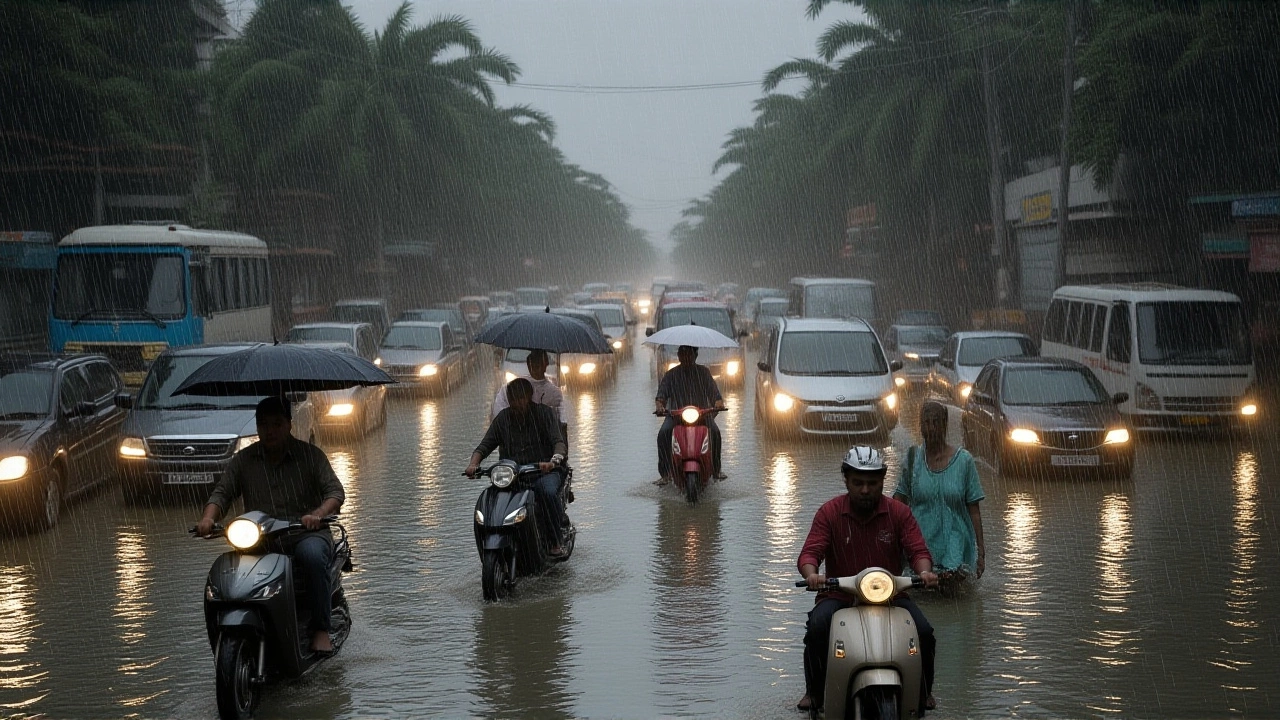Monsoon 2025 Overview
When talking about Monsoon 2025, the seasonal rain pattern expected across South Asia in the year 2025. Also known as 2025 South Asian Monsoon, it marks a crucial water supply period for billions of people. This season isn’t just about clouds; it intertwines with Weather Forecasting, the science of predicting atmospheric conditions using models, satellite data, and ground observations, Climate Change, long‑term shifts in temperature and precipitation patterns caused by greenhouse gas emissions, and Agricultural Impact, how crop yields, planting cycles, and food security respond to rainfall variability. Understanding these links helps planners, farmers, and city officials make better decisions.
Why Weather Forecasting Matters This Year
Accurate weather forecasting is the backbone of monsoon planning. Modern models now ingest real‑time ocean temperature data to predict the timing and intensity of the monsoon’s onset. The subject‑verb‑object triple looks like this: Monsoon 2025 relies on weather forecasting for timing estimates. Agencies such as the India Meteorological Department use ensemble forecasts, giving a probability range rather than a single number. This approach reduces surprise rain episodes and helps farmers decide when to sow rice or maize.
Forecasting also feeds into disaster preparedness. When a model predicts a high‑risk period, emergency crews can pre‑position rescue boats and sandbags. That connection—weather forecasting enables flood management—creates a clear line of action for local authorities.
On the tech side, AI‑driven pattern recognition is gaining ground. By comparing current satellite imagery with past monsoon cycles, algorithms flag anomalies faster than human analysts. This rapid insight speeds up warning issuance and minimizes crop loss.
Meanwhile, climate change adds a layer of uncertainty. Rising sea surface temperatures can intensify the monsoon, but they also shift its geographic reach. The triple here: Climate change affects monsoon intensity and distribution. Researchers note that 2025 may see heavier downpours in coastal zones while inland areas could experience longer dry spells.
These trends matter for agriculture. Farmers track the monsoon’s arrival to align planting schedules. A delayed start forces a switch to short‑duration crops, while an early burst can trigger lodging in tall cereals. Hence, agricultural impact depends on both forecast accuracy and climate trends.
Beyond crops, water reservoirs rely on monsoon input. Dams in the Ganges basin aim to capture enough runoff to sustain irrigation through the dry season. If forecasts overestimate rain, water managers might release excess early, lowering storage for later months. This shows the semantic chain: Monsoon 2025 determines reservoir planning which supports agricultural impact.
In urban centers, flood management intersects with all three entities. City planners use predicted rainfall intensities to design storm‑water networks. When a forecast signals a 70 % chance of extreme events, municipalities upgrade drainage capacity and enforce zoning limits. That relationship—flood management requires weather forecasting and climate insight—creates a safety net for millions.
Looking at historical data, 2023 saw an above‑average monsoon that boosted wheat production in Punjab but caused widespread flooding in Assam. 2024 experienced a weak onset, leading to drought concerns in central India. These back‑to‑back variations highlight why 2025’s outlook is under close watch.
So, what can you expect? Experts forecast a near‑average onset in early June, with a 55 % probability of above‑normal rainfall in the western Ghats. The southern peninsula might see slightly higher totals, driven by a strong Indian Ocean Dipole. For the central plains, a balanced distribution is likely, keeping both water supply and flood risk in check.
To sum up, Monsoon 2025 sits at the crossroads of cutting‑edge forecasting, evolving climate patterns, and the livelihoods of farmers and city dwellers alike. The next sections below dive into specific stories—from sports outcomes influenced by weather to tech launches timed with the season. Keep reading to see how this rainy chapter shapes a wide range of topics.

- Oct 21, 2025
- Posted by Aarav Bhatnagar
Mumbai Metro’s New Acharya Atre Chowk Station Floods Amid Early Monsoon
Mumbai's newly opened Acharya Atre Chowk metro station flooded on May 26, 2025, after an early monsoon caused an RCC wall collapse, forcing MMRC to suspend services and sparking safety concerns.
Categories
Latest Posts
©2025 kvrinfosys.in. All rights reserved




